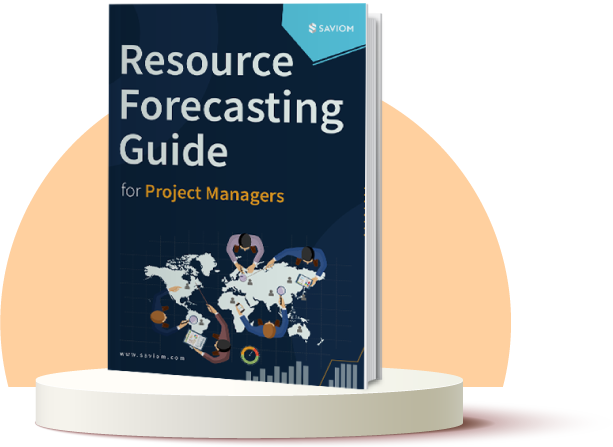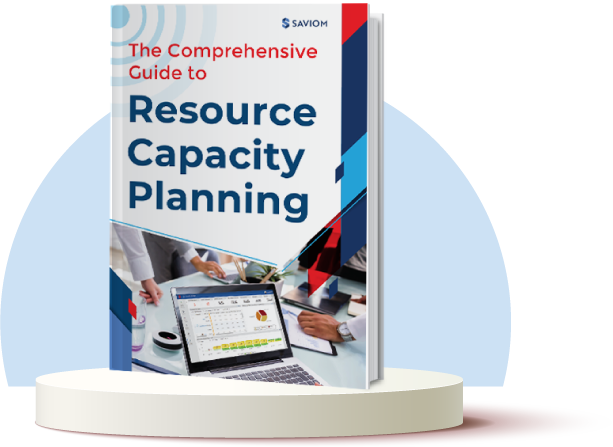Earned Value Management is a recurring term in project cost management, one of the 10 knowledge areas listed in the Project Management Body of Knowledge. It monitors scheduling and cost variances by tallying up the actuals against forecasted or planned numbers. The Earned Value template accompanying it not only highlights where and how these alterations occurred but also lets you work with simple calculations that reflect uniformly on spreadsheets.
So,who amongst us wouldn’t want to, quite literally, get a bang for the buck?
Project and resource managers would answer this question through workforce efficiency. After all, team performances govern how your projects fared. Your constant vigil over project health would be focused on preventing schedules and costs from ballooning uncontrollably.
No one appreciates being handed a schedule that’s subjected to change constantly. But keeping your teams informed of the likelihood of change ahead of the curve lets them determine if they can still fulfill their tasks within stipulated deadlines. What’s more, it alerts them to scheduling conflicts that can risk people missing the point to mission-critical tasks altogether.
without involving your teams closely in the costing process, you’d fall short of the goal to provide quality service at affordable rates. Your resources would have to cost their effort investments against the time left in their working hours to know if the entire project is on track and within budget. This often spells disaster as you’d have to hire expensive contracts in the last minute or compromise on the deliverable itself with repeated extensions.
Let’s get right to the nitty-gritties of the template with a simple glossary that won’t ‘gloss’ over the essentials!


Definitions in Controlled Cost Management Key to Calculating Variances
As the name implies, earned value is the money to be earned from work that gets completed. It translates project milestones to financial units and is calculated by multiplying the percentage of completed work with the budgeted actual cost. A few other terms you’re going to come across are:
Planned Value: Better known as the time-phased cost baseline, the planned value is the Budgeted Cost of Work Scheduled (BCWS).The total budgeted cost established per task is compared against this value.
Actual Cost: All accounted-for costs siphoned onto different tasks of a particular work package, it is determined as the cost to earn related value.
Cost Variance (CV): This is a verifiable account of work costs in comparison to the planned cost. The difference between the earned value and actual cost gives you a project’s Cost Variance. i.e. EV – AC. While some projects eat up all of the budget and others risk overshooting the proposed ceiling, an ideal scenario would be if the project fell under allocated costs.
The cost variance corresponds to a negative value for projects exceeding the budget and produces a positive value if it stays within the financial limit. Monitoring project cost variance is critical to ensuring the project is delivered on budget.
Schedule Variance (SV): The schedule variance refers to how your team’s schedules were affected. It is computed by calculating the difference between the earned value and the planned value, i.e. EV – PV. If your teams are ahead of schedule, their progress is marked by a positive number on the schedule variance. Conversely, if your teams exceeded proposed timelines by reworking or switching up tasks that took longer than expected your schedule variance produces a negative value. Monitoring the Schedule Variance is critical to delivering the project on-time.
Variance Percentage: Given how it computes budgetary implications, Earned Value Management forewarns project manage of cost or schedule fluctuations with the variance percentage, which aggregates the variance calculated. This value showcases how much of the cost was actually utilized against planned value.
Given that automation makes life easier, you wouldn’t spend hours tracking changes on this particular template. But it’s worth remembering that longevity plays a pivotal role in taking your business forward. As familiar as you may be with Excel, remember the saying,’ familiarity breeds contempt’?
After all, today’s spreadsheet template can’t guarantee future success owing to its limitations protecting the very data you’re trying to standardize. Added to which, not everyone possess the same comfort level working around spreadsheets.
While a template is a safe route to digitizing your project’s budget plan, you’d do well to explore sophisticated product suites like Saviom ERM. Combine unlimited visibility, voluminous storage and secure access and you give yourself the advantage of simplicity while sustaining your business model.
So go ahead, download this project-centric Earned Value Template. But stay several steps ahead of the competition with a tour of our solutions!










